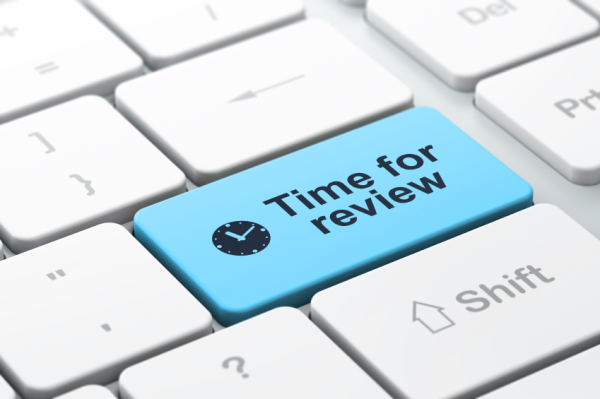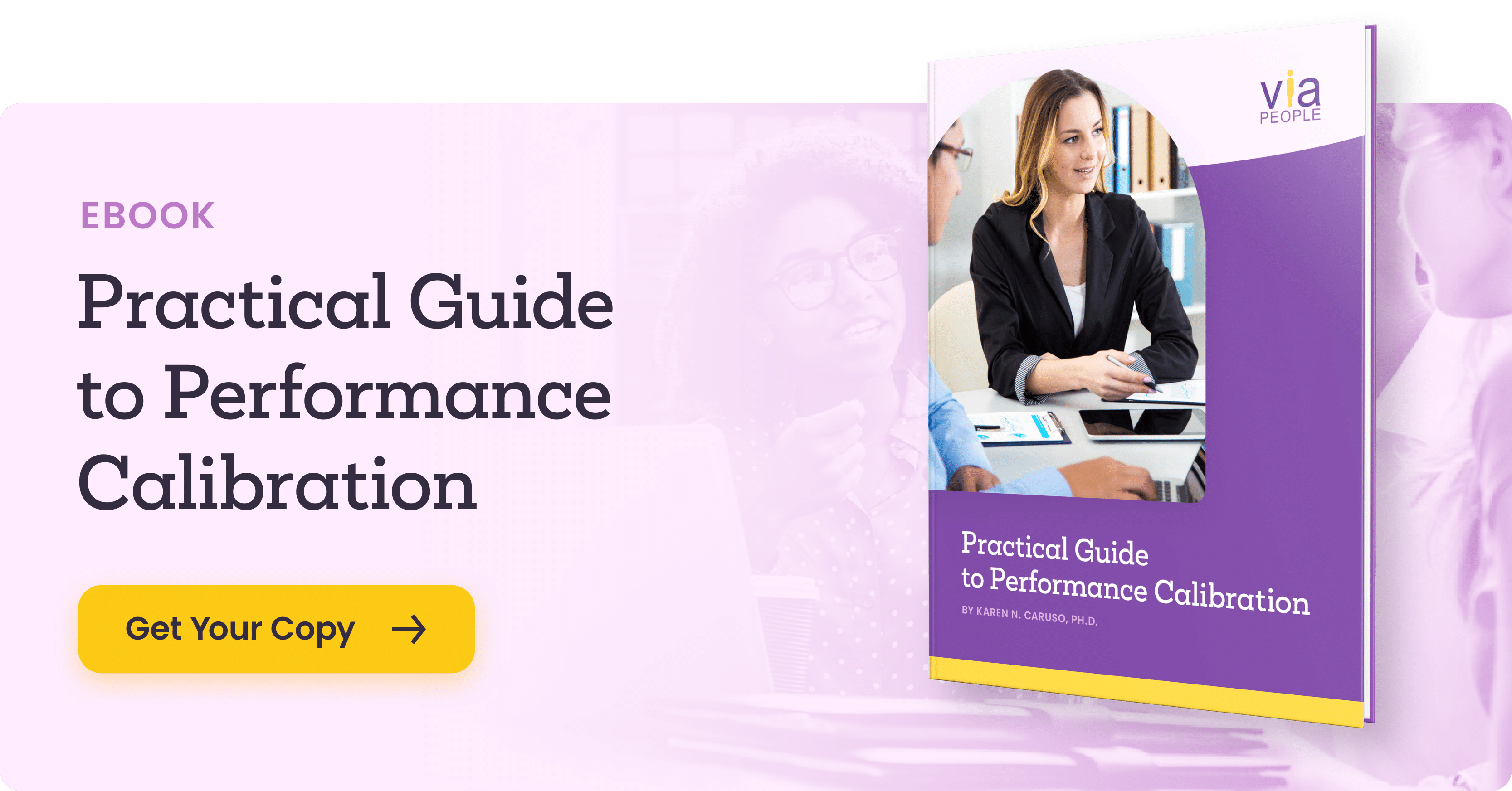8 HR KPIs That Show the Effectiveness of Performance Management
.jpg?width=375&name=GettyImages-1212597561%20(1).jpg) The right performance management solution can help your employees and your company reach their full potential. But how can you convince leadership of the need for quality performance management software? And how can you prove your solution is having a positive effect? The key is to move from generalities to hard data. By tracking the right human resources key performance indicators (HR KPIs), you can demonstrate the power of effective performance management.
The right performance management solution can help your employees and your company reach their full potential. But how can you convince leadership of the need for quality performance management software? And how can you prove your solution is having a positive effect? The key is to move from generalities to hard data. By tracking the right human resources key performance indicators (HR KPIs), you can demonstrate the power of effective performance management.
How HR KPIs Help Make a Business Case for Performance Management Investment
If you’re currently relying on manual processes for performance management and want to demonstrate how a software solution will help your organization, look at the benefits performance management software has delivered to other organizations like yours.
Let’s look at some key benefits companies can share with stakeholders to make a solid business case for performance management software:
- Enhance employee performance. Improving your approach to performance management can motivate and equip employees to perform better. Leveraging talent in your organization more effectively is sure to lead to higher productivity and profits.
- Streamline performance management processes. You don’t want performance management processes such as performance reviews eating up excessive amounts of time because of clumsy, inefficient systems. Streamline these processes by providing the tools managers and employees need.
- Improve employee engagement. Performance management software can help managers share more frequent feedback with employees. Research from Gallup shows that when an employee has received meaningful feedback in the last week, they are almost four times more likely to be engaged at work!
- Plan for a successful future. A performance management solution can aid in succession planning. This empowers employees to advance to higher positions within the company and helps your company plan for future growth and success.
- Make data-driven decisions. Business leaders today should understand that making decisions based on hunches is a thing of the past. With performance management data at your fingertips, you can make more informed decisions to steer your business forward.
→ Need help reporting on performance management KPIs to justify investment? Download our Practical Guide to Performance Calibration to learn how to optimize and measure the impact of your review process.
Top HR KPIs to Measure Employee Performance
Measuring your company’s quarterly sales or revenue involves hard numbers. Measuring employee performance isn’t quite so straightforward—it inevitably involves some subjectivity. However, a quality performance management system can help you bring an impressive level of objectivity and accuracy to the way you measure employee performance.
One way performance management software enhances accuracy is by facilitating 360-degree feedback, which collects data from employees’ peers as well as managers to paint a more detailed and more accurate picture of their performance. Since individuals’ perspectives are subjective, layering on other people’s perspectives lends credence to shared observations.
How can reviewers and companies in general measure an employee’s performance? There are three primary aspects of performance you can evaluate:
1. Output
An employee’s productivity, or output, is a measure of how much work they’re accomplishing. Measuring productivity will look different depending on the type of work your employees do. For example, it could involve tracking the number of products sold or the number of projects completed over a given time period.
Keep in mind that tracking the number of hours an employee works is a poor means of measuring productivity since one employee may accomplish more in two hours than another employee accomplishes in a whole day. Even if an employee feels productive, research shows they’re likely spending a lot of time on low-value tasks and time wasters. The real question isn’t how much time they’re spending at their desk but how much they get done during that time.
2. Quality
Another important aspect of an employee’s performance is the quality of their work.
In some cases, measuring quality is fairly straightforward. This would be the case for manufacturing companies, for example. These companies can use quality control metrics to see how well employees are meeting quality standards.
In other cases, assessing performance quality can be somewhat subjective, but it is still measurable. Use an employee’s job duties to track how well they’re fulfilling each responsibility. When conducting performance reviews, ask an employee’s supervisor and any peers who collaborate with that employee about the quality of their work.
3. Efficiency
A third aspect of employee performance to assess is efficiency. How well does an employee manage their working hours and complete projects in a timely manner? To track efficiency, you might measure how many projects were completed on time during a certain period versus how many extended past the deadline.
It’s best to measure all three aspects of employee performance if possible to fully understand an employee’s performance. Otherwise, you could run into a situation where output and efficiency are on the rise, for example, but it’s coming at the expense of quality. Managers and employees should prioritize all three areas as they strive to optimize performance.
Other HR KPIs to Track
When implementing a performance management solution, it’s also smart to track the following HR metrics:
- Employees’ satisfaction with performance reviews: Find out what employees think of the performance review process. To get more detailed data, ask employees about specific aspects of the process. For example, how fair do employees perceive performance reviews to be? How helpful is the feedback they receive?
- Managers’ satisfaction with performance reviews: It’s also important to consider managers’ thoughts on the process. After all, they are the ones using the system to create performance reviews and prompt discussions with their employees. How well is the system facilitating the process? How convenient is it to use?
- Changes in performance: One of the most important questions to ask is, how well do performance reviews actually differentiate performance? Simply having a performance review process in place won’t necessarily improve performance. In fact, research shows an outdated approach to performance reviews can actually cause more harm than good. Compare employee performance before and after adopting a new system for performance reviews.
- Turnover and retention rates: One of the reasons to invest in employees’ success is so you can retain quality talent. Especially when it comes to top performers, it’s smart to track your turnover and retention rates and see how these rates evolve as you make changes to the way you manage talent in your organization.
- Employee engagement and morale: Happy, engaged employees tend to be more valuable workers and tend to stick around longer. Ask employees about whether they feel appreciated and supported in their roles and how motivated they feel at work. A performance management solution that empowers employees, through developmental reviews and goal setting, for example, should help you improve morale and engagement.
Measuring the Effects of Your Performance Management Solution
To truly understand how a performance management solution is working for your organization, you need to generate some data. Without this data, you’ll be left with general impressions and individual subjective experiences that may not mean much to decision makers in the company.
Establish Baseline Data You Can Use for Benchmarking
If possible, it’s best to start by establishing some baseline data before you implement a performance management solution. On the simplest level, this could consist of surveys to see how satisfied employees and managers are with your current performance management process. Be sure to analyze both the performance management process, including the tools and procedures used, and the quality of employee performance.
Collect Data and Compare It to Your Benchmarks
Once you implement a software solution, you should collect data periodically so you can compare it to your baseline data. Be sure to ask the same questions you asked in your previous surveys or track the same HR KPIs so you can make a direct comparison between your performance management then and now.
Of course, you can also start measuring additional aspects of your performance management to get a fuller picture of how your current approach is succeeding and where it may need some improvement.
That said, more data isn’t always helpful and can instead become overwhelming. Concentrate on the HR KPIs that are most important to you and your leadership. Also, keep in mind that data points typically don’t tell the full story on their own. If you see a trend that is concerning, for instance, you’ll need to dig deeper to understand the cause, or multiple causes, contributing to that trend.Improve HR KPIs Through Performance Management Solutions
Performance management solutions can help you improve a wide range of HR KPIs in your organization. When it comes to performance reviews, it’s critical that you have a quality solution in place to make this a positive experience for both managers and employees. One aspect of that positive experience is ensuring it’s far. Use our Practical Guide to Performance Calibration to learn more about creating a fair and accurate review process for the benefit of individuals and your company as a whole.
Share this
You May Also Like
These Related Stories

Guide to Choosing the Best Performance Management Software for Your People Team

Developmental Reviews vs. Performance Reviews and Why You Should Use Both


